Add Microsoft Exchange Account To Mac Mail

How to set up your email account automatically
Configure Mac Mail With Microsoft Exchange The following will help you setup your Microsoft Exchange email account with Mac Mail. Note: Exchange only runs with the 10.6 or above OS (operating system) If you're unsure about what OS you're running, select the Apple icon located in the top left hand corner and then About This Mac. Use the instructions below to configure UMass Amherst Exchange email and calendaring in Apple Mail and Calendar. We support the latest versions of Apple Mail and Calendar for Mac OS X 10.9 (Mavericks). Note: In previous versions of OS X, some items have different names (e.g., in OS X 10.8, Internet Accounts was called Mail, Contacts & Calendars). This article describes how to set up your Microsoft Exchange 2010 email account with Mac Mail. Note: Exchange 2010 runs only on Mac OS X version 10.6 or later. If you’re unsure about which OS X version you’re running, click the Apple icon located in the top-left corner and select About This Mac. Open Mac Mail and select Mail Preferences. Apr 10, 2017 How to Add a New Email Account to Mac Mail. If you have added more than one email account, you will likely find it useful to set your default email account so that emails are being sent from the account you’d like to send them to by default, and since this setup is using the Mail app you likely want to be sure that the default email app is set to Mail on the computer too.
If you use an email provider like iCloud, Google, or Yahoo, Mail can automatically set up your email account with just your email address and password. Here's how:
- Go to Settings > Passwords & Accounts.
- Tap Add Account, then select your email provider.
- Enter your email address and password.
- Tap Next and wait for Mail to verify your account.
- Choose information from your email account, like Contacts or Calendars.
- Tap Save.
If you don't see your email provider, tap Other to add your account manually.
How to set up your email account manually
Add Exchange Account To Computer
If you need to set up your email account manually, make sure that you know the email settings for your account. If you don’t know them, you can look them up or contact your email provider. Then follow these steps:
- Go to Settings > Passwords & Accounts.
- Tap Add Account, tap Other, then tap Add Mail Account.
- Enter your name, email address, password, and a description for your account.
- Tap Next. Mail will try to find the email settings and finish your account setup. If Mail finds your email settings, tap Done to complete your account setup.
Is your email account set up? Learn more about using the Mail app on your iPhone, iPad, or iPod touch.
Enter account settings manually

Add Microsoft Exchange Account To Mac Mail Email
If Mail can't find your email settings, then you need to enter them manually. Tap Next, then follow these steps:
- Choose IMAP or POP for your new account. If you aren’t sure which one to choose, contact your email provider.
- Enter the information for Incoming Mail Server and Outgoing Mail Server. Then tap Next. If you don't have this information, try to look it up or contact your email provider.
- If your email settings are correct, tap Save to finish. If the email settings are incorrect, you'll be asked to edit them.
If you still can't set up your email account or save your email settings, contact your email provider.
Do more with Mail
- Learn how to delete email on your iPhone, iPad, or iPod touch.
- Search for and view email in the Mail app on your iPhone, iPad, or iPod touch.
The following table provides information and tips for entering basic Microsoft Exchange account settings in the Outlook Accounts preferences.
Option | Description |
|---|---|
Account description | This is how your account is labeled in Outlook. You can give account any name that is helpful to you. |
Full name | This is how your name appears in the From field of e-mail messages that you send. |
E-mail address | You must type your complete e-mail address, such as someone@example.com. |
Method | The administrator of your Exchange account determines the kind of authentication that your organization uses. When you set up your account in Outlook, select the authentication method that is used by your organization, either User Name and Password or Kerberos authentication. |
User name | This is usually your domain name followed by a backslash and your account ID. For example, if your domain is 'example' and your account ID is 'someone,' you type examplesomeone. Frequently, the account ID is the part of your e-mail address before the '@' symbol, and the domain is the part of your e-mail address after the '@' symbol. However, this is not always true. For some accounts, your user name is your complete e-mail address. |
Password | This is the password for your Exchange account, which is usually case-sensitive. |
Kerberos ID | Depending on how your Exchange server is configured, you may already see one or more Kerberos IDs to select from. Or, click the Kerberos ID pop-up menu, and then click Create a New ID. Important: When you create a new ID in Mac OS X v10.5 (Leopard) or earlier, you are asked for your name, password, and realm. Realm is another name for a 'domain.' In the Authenticate to Kerberos dialog box, in the Name field, enter your Account ID. This is sometimes the part of your e-mail address before the '@' symbol. In the Realm field, you must enter the domain name in all uppercase letters, such as '.COM'. |

Microsoft Project 2019 Mac Os

-->
Project options
Microsoft Project for Mac users My team will be starting a new project soon and we would like to start the new year off with using Microsoft Project 2016 for Mac. However, all we are finding are alternatives for Mac. About Microsoft Project. Microsoft Project is a project management solution designed for enterprises of all sizes. It features project scheduling, which allows project managers to define project tasks, assign them to the team, and track in-progress assignments. Windows Vista, Windows XP, Mac OS, Linux, HP-UX, AIX, Solaris, Unix, IBM OS/400. A project is defined by a file (e.g.,.csproj for C# projects) which contains xml that defines the file and folder hierarchy, paths to files and project-specific settings, such as build settings. When a project is loaded by Visual Studio for Mac, the Solution Pad uses the project file to display the files and folders in your project. With the release of macOS 10.15 Catalina,Office 365 for Mac and Office 2019 for Mac support macOS 10.15, 10.14, and 10.13. Moving forward, as new major versions of macOS are made generally available, Microsoft will drop support for the oldest version and support the newest and previous two versions of macOS.
Project options are specific to each project and affect how the project is written, built, and run. This contrasts with Visual Studio for Mac Preferences (which sets user-specific options) and Solution options (which set options for the entire solution). Project options are stored in the project (.csproj) file, so that other developers can build and run the project correctly. Having specific project options allows many developers to work on the same document without compromising the formatting of the file.
Office 2019 Mac Os Compatibility

To open Project options in Visual Studio for Mac, double-click the project name, or right-click to open the context menu, and then select Options:
Editable options include options to build, run, and set source code and version control.
Project options are organized into five different categories:
- General - Project information such as Name, Description, and Default Namespace are set here, along with the Location of the project.
- Build - This allows developers to set or change PCL profiles for Portable Class Libraries. It also allows for custom commands, configurations, compiler options to be set. The output path and assembly name can also be set here.
- Run - This allows you to create custom run configurations on a per-project basis.
- Source Code - This allows you to control the formatting of many different file types and naming conventions. You can also set the naming policies and default header styles here.
- Version Control - This allows you to edit the style of the commit message when using Version Control with your project.
Microsoft Office 2019 Mac Os
Each project can contain specific project options, depending on the platform. For example, a Xamarin.Android project, like the one illustrated in the following image, has options relating to the Android build (such as linker options) and the Application (such as permissions):
Xamarin.iOS has options related to bundle signing - such as the required provisioning profile to use:

Solution Options
Solution options are like Project options, but cover the scope of the entire Solutions. They provide a way to set author information, build settings, code formatting styles, and version control, and they allow for a way to assign the startup project in the Solution. The Solution Options dialog can be accessed from the Project > Solution Options menu item, from the Options context menu item on the Solution in the Solution pad, or by double-clicking on the Solution in the Solution Pad:
Microsoft Project 2019 Mac Os Free
See also

Can Microsoft Open Mac Eml Email File

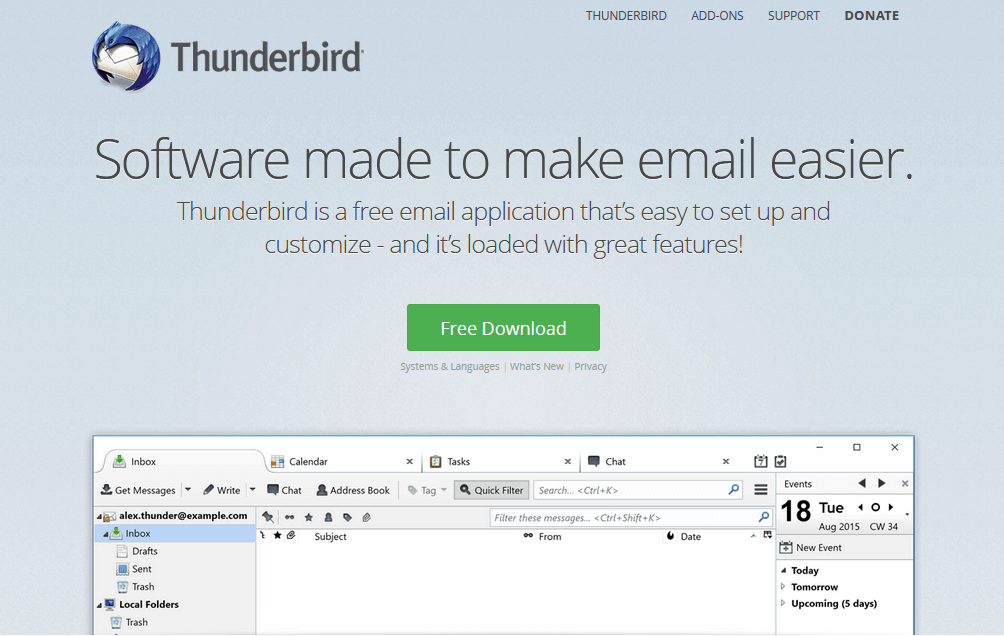
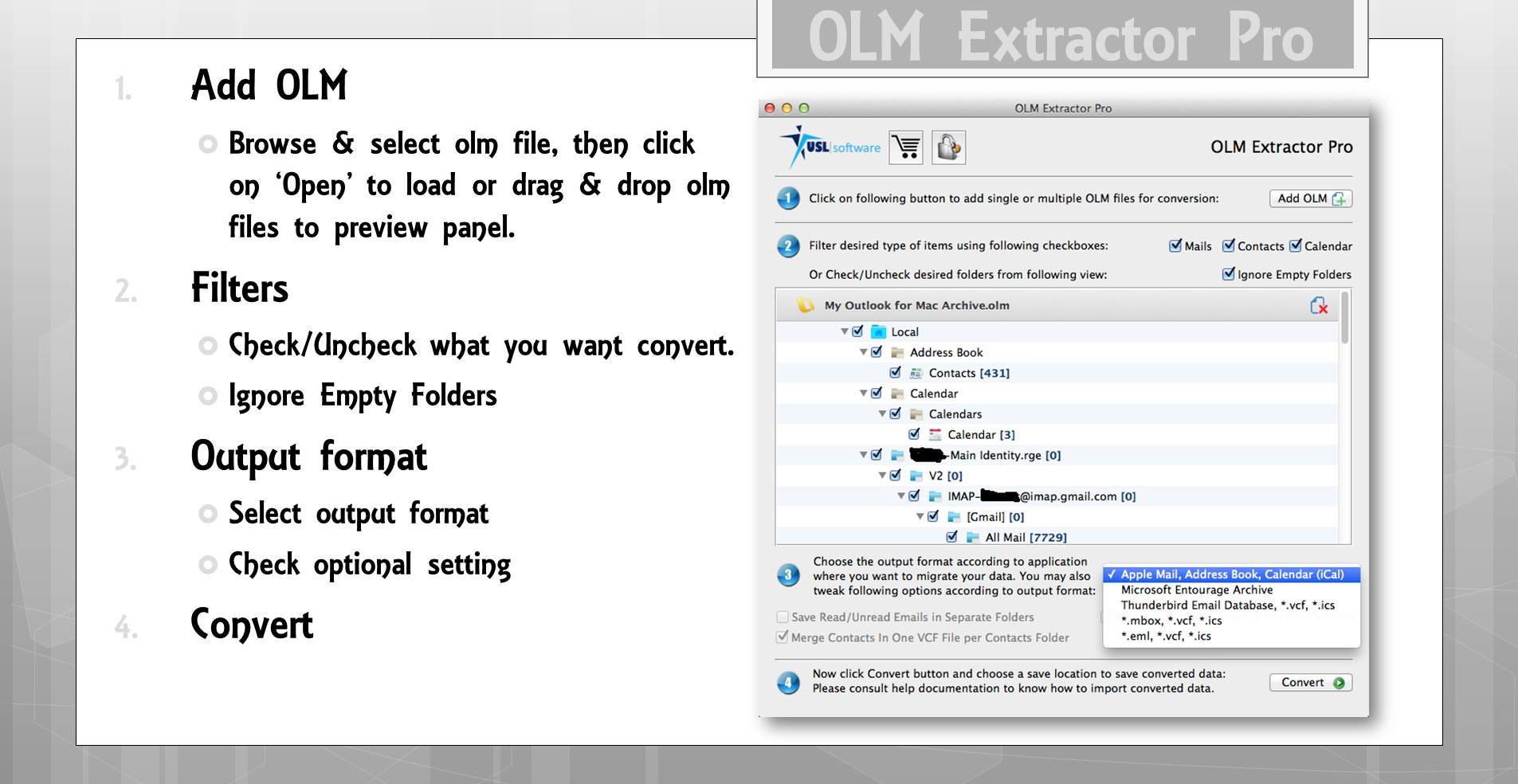
FreeViewer EML File Viewer
Explore and Understand EML Viewer
EML Viewer Tool Characteristics
- May 16, 2019 You can either open the email program first and then open the EML file, or you can change a specific setting on your computer so that double-clicking an EML file opens it in the program of your choice.
- Mar 19, 2020 The first thing I did was right click on a saved.eml file and associated it with OUTLOOK (which opens a new email with the.eml file as an attachment) Now on my computer HKEYCLASSESROOT.eml points to emlautofile. I changed HKEYCLASSESROOTemlautofileshellreadcommand to call 'c:Program FilesMicrosoft.
Home ¬ How to ¬ Convert EML to PST & import to Office 365. Click File Export Email, and then select Email Messages. Prompt to upload the PST files (from a shared location) to Office 365 using the AzCopy.exe tool (optionally, you can view the PST files using Microsoft Azure Storage Explorer). Yes, the EML File Reader Software supports Windows as well as Mac OS X based email client's EML files. What Customers Are Saying Get User Reviews of EML Viewer Tool.
Unable To Open Eml File
There are numerous email client applications such as Microsoft Outlook Express, Windows Live Mail, Mozilla Thunderbird, Apple Mail or Mac Mail, Webmail, etc. that support EML files. Sometimes, the user needs to open and view EML files without an email client application. In such situation, one can make use of EML Viewer Tool, a perfect utility to open and view EML files in a hassle-free way. The user can view emails associated with the EML files along with the attachments. The EML Reader Software is integrated with amazing features such as Investigate EML Files with Attachments, Advanced Search Option, Multi-Screen View Modes, View Corrupt EML Files, No EML File Size Limitation, etc. The properties associated with the Email Message such as Subject, To, From, Size, etc. are also maintained by the EML File Reader Tool. Additionally, the utility is designed with the latest technology and an easy-to-use interface for user’s convenience. No security and data loss issues are associated with the utility. For corrupt EML files, the EML File Viewer Tool provides advanced scanning modes that are quickly scan corrupt EML files and generates preview.
Can Microsoft Open Mac Eml Email File Free
Easy For Forensic Purposes to Examine Email
Nowadays, forensic investigators, forensic research analyst, etc. also need an instant yet reliable way to analyze EML files associated with some project. Thus, they can opt for EML Viewer to open and investigate EML messages for carving evidence. Moreover, forensic investigator or a home user, both can work with the utility in a hassle-free way due to the user-friendly interface of the software. File signature of EML extension as per the email clients are:
- Netscape: 46 72 6F 6D 20 20 20
- Eudora: 46 72 6F 6D 20 3F 3F 3F
- Generic .eml signature: 46 72 6F 6D 3A 20
Can Microsoft Open Mac Eml Email File 2017
All the email signatures listed above show the ‘From‘ which is marks the beginning of a new email. To view EML file in depth the software provides Hex Viewer and Message Header View which allows the user to view EML file with all the details associated with it. It is very beneficial for the forensic investigators while examining the EML file.

Best Microsoft Word Replacement For Mac

Mar 16, 2020 Free office software has come a long way in recent years, and the best free suites can now easily take the place of premium apps for many users. For most users, Microsoft Office remains the. Nowadays there’s no need to pay for Microsoft Word on Mac so we’ve examined the best Word alternatives for Mac. These word processors provide a significant saving on MS Word and in some case are even better. There’s a good mix of paid and free alternatives to Word on Mac here to suit all budgets. Nov 21, 2015 Microsoft Outlook isn't the only email client on the block. Check out our top picks for the best desktop email clients available for Windows and Mac OS X.
You don't have to leave Microsoft Office if you decide to switch from PC to Mac. Microsoft has a perfectly good version of Office 365 for Mac that comes with Word, Excel, PowerPoint, OneNote, Outlook, and more. If you've been thinking about switching away from the Office productivity suite, there are alternatives that offer many of the features you love in Microsoft's programs, plus some features you can't get anywhere else.
iWork Suite
Apple's alternative to Office is iWork. It's the most comparable alternative to Microsoft's productivity suite, only it comes free with every Mac. The interface is different, and will take some time to get used to, but if you're really interested in kicking Office to the curb, the iWork suite is the best alternative on Mac.
If you're ready for change, and Office's user interface, design, and tools aren't burned into your psyche, get Apple's iWork suite of apps. It comes preinstalled on new Macs, but you can also find it in the Mac App Store.
- Pages - Download now
- Numbers- Download now
- Keynote - Download now
OpenOffice
OpenOffice by Apache is probably the most similar to Microsoft Office in look and design. It comes with a word processor, a spreadsheet maker, and a presentation creator, all with many of the same features their Office counterparts have. Files are saved as open document format files, so they can be opened with any document viewer, including Office apps, without needing to be converted first. The best part is that OpenOffice is completely free.
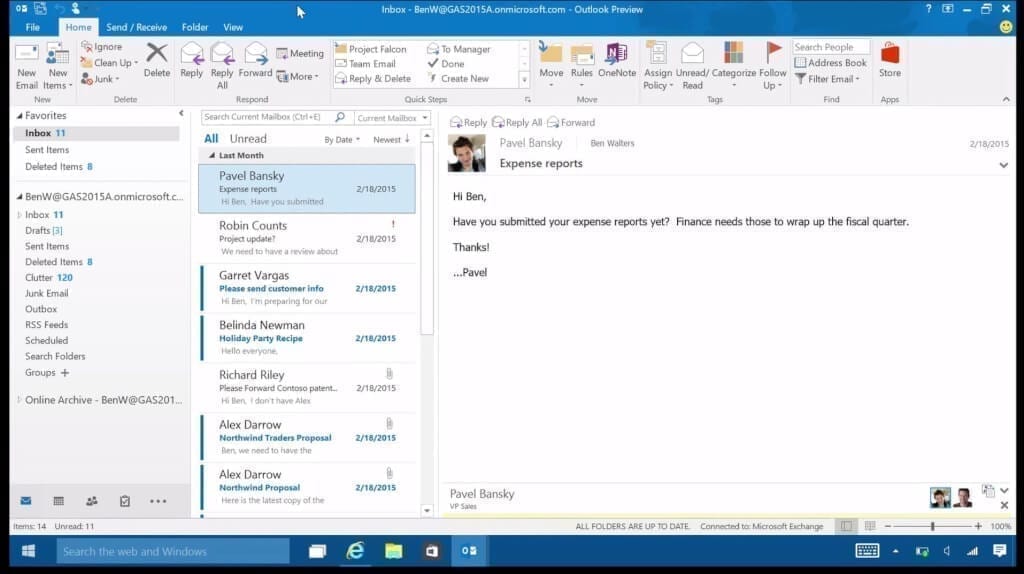
If you're looking for an alternative to Microsoft Office that looks and works pretty much exactly the same, but doesn't cost a dime, OpenOffice is for you.
LibreOffice
LibreOffice is an open source productivity suite very similar to Microsoft Office that comes with a word processor, spreadsheet maker, and presentation creator. It also includes a vector graphics editor, a math formula editor, and a database manager. Files are saved as open document format files, so you can open them with any document viewer, including Office apps, without needing to be converted first, though it does provide tools for saving a document as an Office-specific file. LibreOffice is totally free. It is very similar in design to Microsoft Office, with some minor differences in the design.
LibreOffice is a solid replacement for the Office apps and includes some useful extra programs that Office doesn't even have.
Google Docs
Google Docs is the easiest replacement for Microsoft office because it's so accessible. If you have a Gmail account, or a Google Hangouts account, or a YouTube account, you have Google Docs. Just visit the web-based app from your browser and you can create word processor documents, spreadsheets, and presentations. There is a Google Drive app you can download onto Mac so you can work offline. The changes will be made when your Mac is back online. Google Docs doesn't look at all like Microsoft Office, and has a very different user interface, but it does have many of the same, familiar features you know from Office.
The thing that makes Google Docs so useful, however, is it's real-time collaboration, which works seamlessly with multiple users. I've worked alongside a dozen other people in one document. I am able to see where everyone is within the documents and can see exactly when changes are made.
If you're looking for a very easy to use Office replacement that is ideal for working with others in real-time, you'll be pleased with Google Docs.
What's your pick?
Do you use a Microsoft Office alternative you'd recommend to our readers that are new to Mac or just want to switch from Microsoft? Put your suggestion in the comments below and tell us why its the one you chose.
MacBook Pro
Main
We may earn a commission for purchases using our links. Learn more.
Microsoft Word And Excel For Mac
For all your USB-C needsThe HybridDrive is a USB-C dock with an SSD built in
Best Microsoft Word Replacement For Mac Pro
You need more ports, right? And you probably need more storage, right? What you really need is the HybridDrive.

Mac Microsoft Word French Accents

To type French accents in Microsoft Word, press Ctrl. Type the appropriate command, and then type the letter the accent mark is over. Type an acute accent. Press the Ctrl key. Type an apostrophe. Release both keys, and type the letter 'E.' Type a grave accent. Press Ctrl, and click the '`' key. Oct 10, 2018 Typing accented French characters on a PC Hugh A N. Typing Accents on a MAC (Spanish Keyboard. Three Ways to Insert Accent Marks in Microsoft Word.
- In this video, I'm going to show you how to add French accents to letters in Microsoft Word 2010, when using an English keyboard. Often, people need to add accents to words because on an English keyboard it does not have the French accents. Using hotkey commands, we can add the accents and continue to write in an acceptable French style.
- These codes apply to Microsoft Word on Windows only. Users of Word for Mac should refer to the Mac Option codes. If you are using another software package, you must use one of the other methods of inputting accents.
Using a word processor such as Microsoft Word
Using a word processor will probably be the easiest way to enter accents with your text, not only for compositions, but also for electronic messages that you can type first and then paste it into the CUBBoard. (You should also take advantages of your word processor's spelling checker—if a French dictionary is installed, it will check and correct your answers with your spelling).
Microsoft Word will allow you to insert characters with accents by clicking Insert-Symbol. Even better, however, are the keyboard shortcuts available since Word 97:
é: Press Ctrl and type '' (apostrophe). Release both keys and type 'e'.
à-è-ù: Press Ctrl and type '`' key (left-hand side, top of the keyboard). Release both keys and type 'e', 'a', or 'u'.
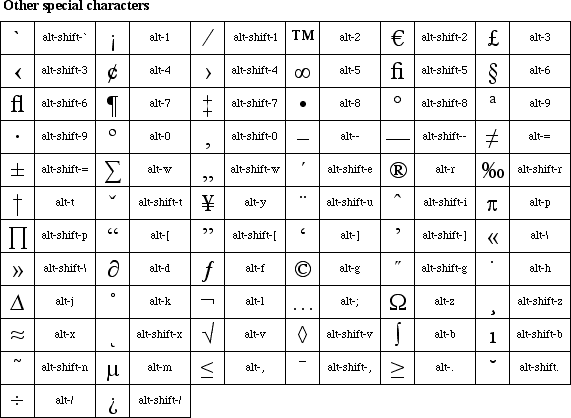
â-ê-î-ô-û: Press Ctrl and Shift and type '^' key. Release both keys and type 'a', 'e', 'i', 'o', or 'u'.
Mac Microsoft Word French Accents For Windows
ç: Press Ctrl, and type ',' key. Release both keys and type 'c'.
ä-ë-ï-ü: Press Ctrl, Shift, and type ':' key. Release both keys and type 'a', 'e', 'i', or 'u'.
Mac Microsoft Word Free
œ: Press Ctrl, Shift, and type '&' key. Release both keys and type 'o'.
Using Extended ASCII characters
If you need to write a message directly into Columbia's electronic bulletin board—if you are, for example, at a public terminal that does not have a word processor—you will need to use Extended ASCII codes to enter accents. (You can use Extended ASCII codes in a word processor such as Microsoft Word, but they are more complicated than Word's own codes). These characters are generated by holding down the 'ALT' key and typing in a three-digit numeric code with the numeric keypad on the right side of the keyboard. In addition, Windows also uses an extra system of keystrokes for entering these ASCII characters, which uses 'ALT' plus a four-digit numeric code. In a Windows application, either code can be used. For example, typing ALT + 130 or ALT+ 0233 will produce 'é':
â: ALT + 131 or 0226
à: ALT + 133 or 0224
ä: ALT + 132 or 0228
ç: ALT + 135 or 0231
é: ALT + 130 or 0233
è: ALT + 138 or 0233
ê: ALT + 136 or 0234
ë: ALT + 137 or 0235
î: ALT + 140 or 0238
ï: ALT + 139 or 0239
ô: ALT + 147 or 0244
ù: ALT + 151 or 0249
û: ALT + 150 or 0251
ü: ALT + 129 or 0252
œ: ALT + 0157
For a complete table of ASCII codes, see www.asciitable.com; for a table of Windows Extended ASCII codes, see http://www.waunakee.k12.wi.us/midlschl/ascii.htm
Mac Microsoft Word Trial
Using a built-in keyboard
You can switch the keyboard settings to reflect the standard French keyboard layout. You might want to use stickers to indicate which keys are which, since the French keyboard is somewhat different from the standard U.S. keyboard. Check your computer's Settings folder to see if this option is available.

Does Microsoft Office 2019 Include Publisher For Mac

- Does Microsoft Office 2019 Include Publisher For Mac 2017
- Does Microsoft Office 2019 Include Publisher For Mac Download
Does Microsoft Office 2019 Include Publisher For Mac 2017
Office 2019 is the latest version of Microsoft's productivity software that's available as a one-time purchase from a retail store or through a volume licensing agreement.
Project 2019, Visio 2019, Access 2019, and Publisher 2019 are for Windows only. Office 2019 customers will get access to OneNote. For more details, see here. Compatible with Windows 10 or later. For complete requirements for PC and Mac see system requirements. This plan works with Office 2019, Office 2016, and Office 2013. Microsoft Office Home and Student 2019 provides classic Office apps and email for families and students who want to install them on one Mac or Windows 10 PC for use at home or school. Classic versions of Office apps include Word, Excel, and PowerPoint. The most up-to-date version of Microsoft Publisher is always available with an Office 365 subscription. Publisher 2019 is the latest classic version of Publisher. It is a one-time purchase that does receive updates. Previous versions include Publisher 2016, Publisher 2013, Publisher 2010, Publisher 2007, and Publisher 2003.
Important
Office 2019 is separate from Office that's available through Office 365 plans. For example, if you've deployed Office 365 ProPlus to the users in your organization, you don't need Office 2019. You already have all the features, and many more, that are included in Office 2019.
Volume licensed versions of Office 2019 are available for enterprise admins to download and deploy to the users in their organization. This includes the following Office products:
- Office Professional Plus 2019
- Office Standard 2019
- Project Professional 2019
- Project Standard 2019
- Visio Professional 2019
- Visio Standard 2019
These Office products now use Click-to-Run, instead of Windows Installer (MSI), as the installation technology. But, how you activate these Office products – for example, by using Key Management Service (KMS) – remains the same.
Office 2019 for Mac is also available for volume licensed customers. For more information, see Deployment guide for Office for Mac.
What's changed in Office 2019?
The biggest change since Office 2016 is that the installation technology used by the new volume licensed versions of Office is Click-to-Run, instead of Windows Installer (MSI). Click-to-Run has been the installation technology for most Office products since the release of Office 2013.
In addition to Click-to-Run, the following are some other changes that you need to be aware of:
- Office 2019 is supported on Windows 10 but isn’t supported on Windows 7 or Windows 8.1. For more information, review the system requirements.
- To configure and perform installations, you use the Office Deployment Tool, which is a free download from the Microsoft Download Center. The Office Customization Tool that you previously used for Windows Installer (MSI) is no longer used.
- Instead of downloading the installation files from the Volume Licensing Service Center (VLSC), you use the Office Deployment Tool to download the installation files directly from the Office Content Delivery Network (CDN) on the internet.
- When you install Office Professional Plus 2019, all apps are installed by default. But, you can configure the Office Deployment Tool to exclude certain apps from being installed.
- Office 2019 is installed on the system drive, which is usually the C: drive. The installation location can’t be changed.
- Updates to Office 2019, such as security updates and bug fixes, can be configured to be automatically downloaded and installed from the Office CDN. Individual downloads for each security update or bug fix aren’t available.
What's stayed the same in Office 2019?
Even though there is a different installation technology, you can still use the same software distribution tools, such as Microsoft Endpoint Configuration Manager, that you currently use to deploy Office. Also, how you activate volume licensed versions of Office – for example, by using Key Management Service (KMS) – remains the same.
The major version of Office 2019 is staying at 16.0, so some additional things are staying the same for those upgrading from Office 2016, including the following:
- Existing Group Policy settings will continue to work, because the registry location for those settings will still be located in HKEY_LOCAL_MACHINESOFTWAREPoliciesMicrosoftOffice16.0 and HKEY_CURRENT_USERSOFTWAREPoliciesMicrosoftOffice16.0.
- Other registry locations and settings information that reference 16.0 will still apply.
- Add-ins and other extensibility solutions that are compatible with Office 2016 will most likely be compatible with Office 2019 or will require only minimal testing.
What are the new features in Office 2019?
For information about the new features in Office 2019, see the “what’s new” articles for Access, Excel, Outlook, PowerPoint, Project, Visio, and Word. Office 2019 includes some, but not all, features that are available in versions of Office that come with an Office 365 subscription plan.
Office 2019 won’t receive additional new features now that it has been released. If you want to get new Office features on an on-going basis, you should consider moving to an Office 365 plan that includes Office. Most enterprise plans of Office 365 include Office 365 ProPlus, which includes the same Office apps as Office Professional Plus 2019. For more information, see enterprise options for Office 365 and What’s new in Office 365.
How do I upgrade to Office 2019?
We recommend that you uninstall existing versions of Office before you deploy Office 2019. If you’re uninstalling previous versions of Office products that were installed with Windows Installer (MSI), the Office Deployment Tool can remove most of those for you as part of the installation of Office 2019. For more information, see Remove existing versions of Office before installing Office 2019.
Additional information
- Office Professional Plus 2019 includes Access, Excel, Outlook, PowerPoint, Publisher, Word, and Skype for Business.
- There isn’t a 2019 version of OneNote, but OneNote 2016 is available for Office 2019. For more information, see Deployment guide for OneNote.
- All products in the Office 2019 are available in both 32-bit and 64-bit versions. We recommend 64-bit on computers that have 4 gb or more of memory. But you should assess application compatibility and other factors that might require you to use the 32-bit version. For more information, see Choose between the 64-bit or 32-bit version of Office.
- After downloading the installation files, internet access isn’t required to install, activate, or use Office 2019.
- There isn’t a 2019 version of SharePoint Designer or InfoPath. The last version for both products is 2013.
Related topics
We may earn a commission for purchases using our links. Learn more.
The best solution for youI've worked with the suite Microsoft Office apps for a long time, and while I've tried other apps, I always come back because of the features and usability. After spending thousands of hours writing, communicating, and collaborating with these apps and services, I know that choosing between Office 2019 and Office 365 isn't easy.Subscription-based
Office 365
One-time purchase
Office 2019
Office 365 is the best option for anyone who needs access to the full range of apps and perks on multiple devices. And, you can share an account with up to six people. Also, it's the only option that offers continuity of updates and upgrades with a low cost of ownership. However, there are monthly or yearly costs, and over time, you may end up paying for features that you'll never use.
Pros
- All apps access
- Multiple people can use across multiple devices
- Free upgrades
- Customer support
- Windows 10, 8.x, 7, and macOS support
Cons
- Monthly or yearly subscription
- Limited functionality if service issues
- New changes may be overwhelming
- Paying for unnecessary features
If you only need the basic features on a single PC, Office 2019 is probably all you need, as it allows you to access the must-have apps, such as Word, Excel, PowerPoint, and Outlook, with all the necessary functionalities. However, paying upfront can be pricey, you have to pay again for upgrades, and you don't get extra perks.
Pros
- Popular apps access
- No monthly payments
- Security updates
- Traditional experience
- Windows 10 and macOS support
Cons
- One device per license
- Limited set of features
- Limited to Windows 10 and macOS
- No upgrades
- No customer support
If you're planning to upgrade, or you're new to Microsoft Office, you probably noticed that now you have two options: Office 2019 and Office 365. If you're a little confused about which one to choose, you're not alone. Although both products give you access to the same apps with the latest core features, some significant differences come down to the cost of ownership and list of features (and to be clear, Office 2019 isn't a replacement for Office 365).
Office 2019
Source: Windows Central
Office 2019 is the name that Microsoft is using for the standalone version of its popular suite of office apps. It doesn't require a monthly subscription, meaning that once you go through the one-time purchase, you own the copy forever.
Using this option (also known as the 'perpetual' or 'on-premises' version of Office), you can install the apps on one computer, and you'll get security updates. But you won't be able to upgrade to a follow-up version. This means that you can keep using the version that you purchased for its life-cycle (usually five years) and beyond (without updates), but if you want to access the new features and tools, you'll need to pay full price again.
Also, even though Office 2019 comes with apps like Word, Excel, PowerPoint, and Outlook with more improvements than the older version, it only ships with a subset of features and without many of the perks available with an Office 365 subscription. For example, with the 2019 version, you won't find cloud and AI features, along with benefits such as 1TB of OneDrive cloud storage and free monthly credits to make calls to landlines using Skype.
Who should buy Office 2019

Although anyone can purchase Office 2019, this version has been designed for commercial customers with volume licenses in mind who aren't yet ready to transition to a cloud-based version of Office and happen to have specific requirements to use the suite of apps on-premise.
Although anyone can purchase Office 2019, this version has been designed for certain commercial customers.
If you're a regular consumer, this is still (somewhat) a good option if you prefer a more traditional experience. If you plan to install the suite on a single device, don't depend on new features, or you're not ready to start using cloud-based applications, then it's also a solid choice.
Additionally, while you're getting a license for one PC or Mac going down the one-time purchase route, you can install the Office apps on all your mobile devices, but you'll only get some basic features.
Office 2019 comes in two flavors, including 'Office Home & Student 2019' and 'Office Home & Business 2019,' and they're typically priced at $150 and $250 per device, respectively. Office Home & Student 2019 comes with Word, Excel, and PowerPoint, while Office Home & Business 2019 includes Word, Excel, PowerPoint, Outlook, and OneNote.
Also, consider that unlike previous perpetual versions, Office 2019 is only supported on devices running Windows 10 or the three most recent versions of macOS. If you must use the most up-to-date version of Office, and you're still on Windows 8.1 or Windows 7, you have to purchase an Office 365 subscription.
Office 365 features
Source: Windows Central
Office 365 is the name that Microsoft uses for its subscription plan service that offers the same apps available with Office 2019, but with even more apps, features, tools, and other benefits.
Using this option, you'll be paying a monthly or yearly subscription fee giving you access to apps like Word, Excel, PowerPoint, Outlook, Publisher, Access, and others across your devices (PC, Mac, tablet, and phone) as long as only six devices are accessing the account at a time. Also, depending on your subscription plan, you can share the account with up to five additional people for a total of six people with one subscription.
Perhaps one of the best parts about getting a subscription plan is that you never have to worry about new versions. When you're using Office 365, you'll always be running the most up-to-date version of the apps that Microsoft has to offer. This unlocks regular security updates, improvements, and, more importantly, access to the latest features and tools as soon as they become available.
You also get cloud features, such as real-time collaboration and AI features, to help boost your productivity at home, school, work, and across devices. Also, as part of the bundle, everyone gets 1TB of OneDrive storage (up to 6TB in total when using the Home subscription), Skype minutes to make calls to landlines, and you can contact the support line with any question you may have.
If you need even more storage, in addition to the already 1TB of cloud storage, subscribers can also purchase up to an additional 1TB of OneDrive storage on 200GB increments for an extra $1.99 per month, doubling the total storage up to 2TB (1TB already included with bundled and 1TB additional subscription) in their account for $9.99. This option is only available for Office 365 'Home' and 'Personal' subscribers. However, if you're sharing the account using a Home subscription with other people, only the primary account holder can access the separate full terabyte.
Similar to Office 2019, you can install Office 365 on your mobile devices, but unlike the perpetual version, you'll get access to the complete array of features.
Who should buy Office 365
If you need access to the suite of apps, Office 365 is perhaps your best choice, as it's the only option that ensures continuity of updates and upgrades at a low cost. Also, you get access to all the apps, which you can install on all your devices, including on devices running Windows 10, Windows 8.1, Windows 7, and macOS. (Office 2019 only allows you to use apps on a single computer running Windows 10.)
If you need access to the suite of apps, Office 365 is perhaps your best choice.
The subscription service comes with different plans. If you're the only person using the apps and services, you can purchase the 'Office 365 Personal' plan for $70 a year, which gives you access to the software suite, alongside 1TB of OneDrive storage and Skype minutes.
However, if you're planning to share the account with family members or roommates, you should select the 'Office 365 Home' plan for $100 a year, which allows you to share the apps and benefits with up to six people. Plus, everyone gets their Skype minutes and 1TB of OneDrive storage.
If you choose to buy into a subscription plan, you should purchase the yearly subscription as you'll be spending more money paying the monthly fee.
Microsoft even has a free subscription plan for students and teachers using a valid school email address. Using this service, you'll get access to Word, Excel, OneNote, PowerPoint, Microsoft Teams, and other school tools for free.
Although Windows 7 has reached the end of support, Microsoft will continue to offer security updates for Office apps until January 2023, but you won't receive new features. Once you upgrade to Windows 10, support will resume with regular security patches, new features, and improvements.
Important: Microsoft is expected to replace Office 365 Personal and Home with the new Microsoft 365 Personal and Family plans, which will include even more new features and services, such as Microsoft Teams and Microsoft Family Safety, for the same price. If you purchase the one of the currently available subscriptions right now, you'll be switched automatically to the new plans after April 21, 2020.
So, which should you buy?
Ultimately, it'll depend on your requirements. However, if you'll be using the apps for a long time, purchasing an Office 365 subscription is perhaps your best option, because you get full access to all the apps and perks with low cost of ownership.
Subscription-based
Does Microsoft Office 2019 Include Publisher For Mac Download
Office 365
Stay productive with the latest features
Office 365 gives you full access to all the apps and perks, such as 1TB OneDrive and Skype minutes. You can also install Word, Excel, PowerPoint, Outlook, and other apps on up to six devices, and depending on the subscription, you can share the account with up to six people.
One-time purchase
Office 2019
Pay once and forget it.
Office 2019 comes with all the popular apps, including Word, Excel, PowerPoint, and Outlook, with enough features to get the work done.
We may earn a commission for purchases using our links. Learn more.
Send and ReceiveMaster email with one of these awesome apps for Windows 10
Looking for a bit of variety in your email game? Need something powerful to handle the mail you send and receive? These are the best email apps for Windows 10.

Microsoft Word Em Dash En Mac

-->
Microsoft Word Em Dash En Mac Free
Use Microsoft Word for the best word processing and document creation. Find out how document collaboration and editing tools can help polish your Word docs. Microsoft Word with an Office 365 subscription is the latest version of Word. Previous versions include Word 2016, Word 2013, Word 2010, Word 2007, and Word 2003. Mar 26, 2020 With a Mac, use the following shortcuts: Em dash (—): Shift-+ Alt/Option +-hyphen or Command + M. En dash (–): Alt/Option + hyphen.
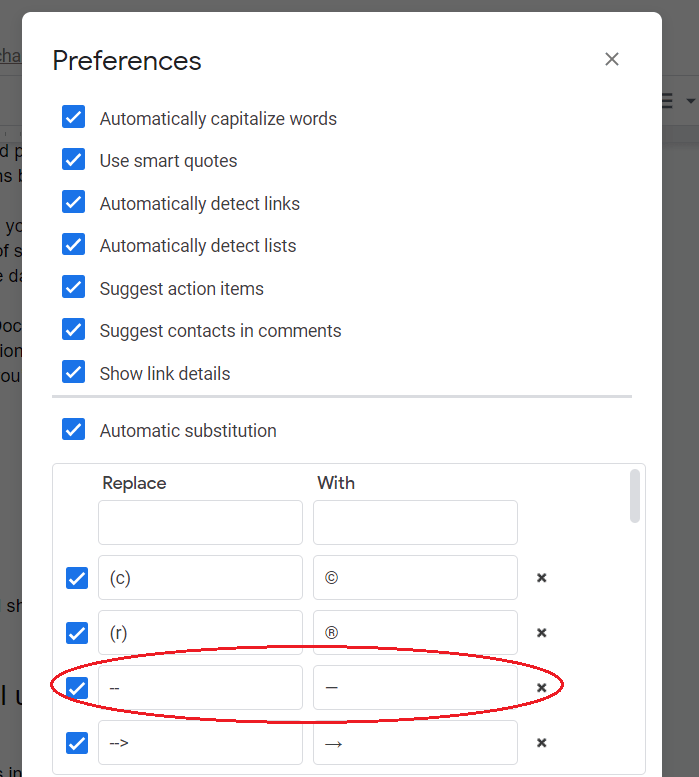
Usean em dash (—) to set off a parenthetical phrase with moreemphasis than parentheses provide. Don’t add spaces around an emdash.
Use one em dash on each side of a phrase embedded in a sentence.
Example
The information in your spreadsheet—numbers, formulas, and text—is stored in cells.Use one em dash to set off a phrase at the end of a sentence.
Example
If you're not sure about the details, look at the illustrations in the wizard—they can help you figure out what type of connection you’re using.
Don’t use an em dash:
In place of a bullet character in a list.
To indicate an empty cell in a table.
Microsoft Word Em Dash En Mac Youtube

Dash Coin
Don’t capitalize the first word after an em dash unless the word is a proper noun.
